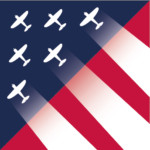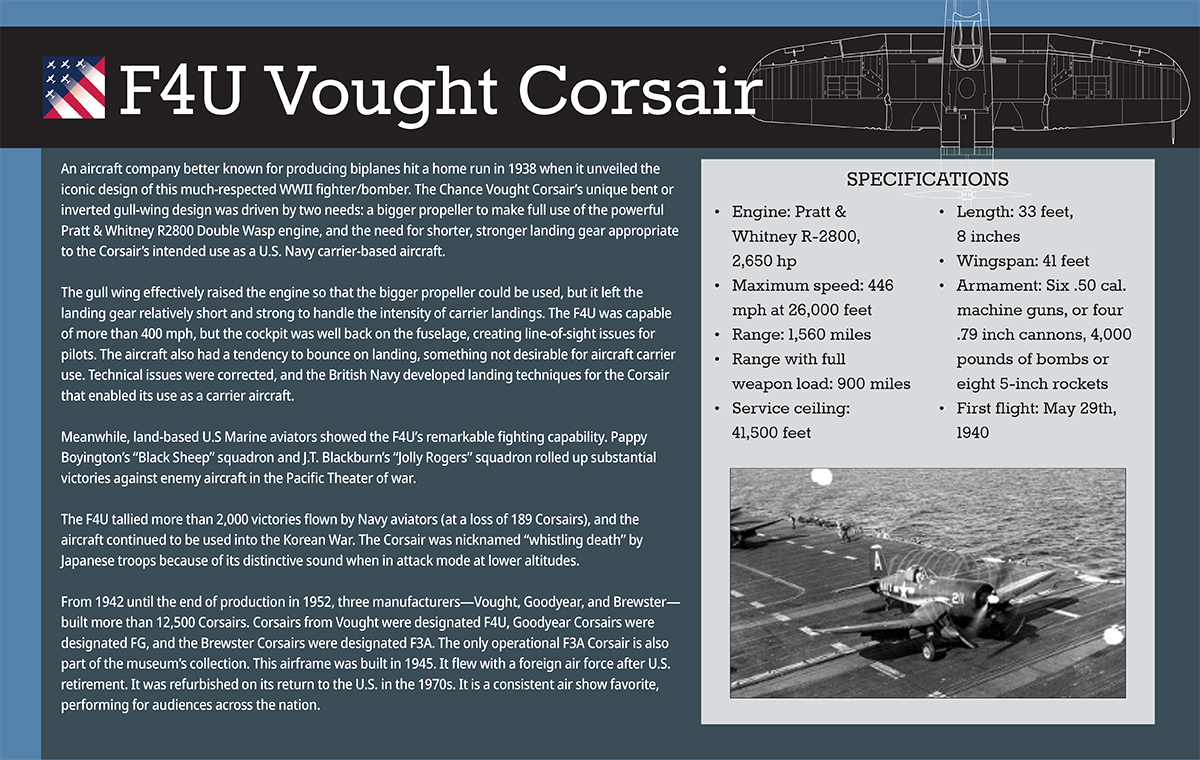An aircraft company better known for producing biplanes hit an aviation home run in 1938 when it unveiled the iconic design of this much-respected WWII fighter/bomber.
The Chance Vought Corsair’s unique bent or inverted gull-wing design was driven by two needs: a bigger propeller to make full use of the powerful Pratt & Whitney R2800 Double Wasp engine, and the need for shorter, more stout landing gear appropriate to the Corsair’s intended use as a U.S. Navy carrier-based aircraft.
The gull wing effectively raised the engine so that the bigger propeller could be used, but left the landing gear relatively short and strong to handle the intensity of carrier landings.
The F4U was capable of more than 400 mph, but the cockpit was well back on the fuselage creating line-of-sight issues for pilots, and the aircraft had a tendency to bounce on landing, something not desirable for aircraft carrier use. Landing techniques for the Corsair developed by the British Navy finally enabled use as a carrier aircraft.
Meanwhile, land-based U.S Marine aviators showed the F4U’s remarkable fighting capability. Pappy Boyington’s “Black Sheep” squadron and J.T. Blackburn’s “Jolly Rogers” squadron rolled up substantial victories against enemy aircraft in the Pacific Theater of war.
The F4U tallied more than 2,000 victories flown by naval and marine aviators (at a loss of 189 Corsairs), and the aircraft continued in use into the Korean War. The Corsair was nicknamed “whistling death” by ground troops because of its distinctive sound when in attack mode at lower altitudes.
From 1942 until the end of production in 1952, three manufacturers—Vought, Goodyear, and Brewster—built more than 12,500 Corsairs. Corsairs from Vought were designated F4U, Goodyear Corsairs were designated FG, and the very rare Brewster Corsairs were designated F3A. The only operational F3A Corsair is also part of the museum’s collection.
This F4U is a consistent air show favorite, performing for audiences across the nation.
Specifications
- Crew: One
- Engine: Pratt & Whitney R-2800 Double Wasp
- Maximum speed: 446 mph @ 26,200 ft
- Range: 1,560 mi (maximum)
- Combat range: 900+ mi
- Service ceiling: 41,500 ft
- Length: 33 ft 8 in
- Wing span: 41 ft
- Armament: Six .50-inch Browning machine guns or four .79-inch AN/M3 cannon
- Bomb capacity: 4,000 lbs or eight 5-inch aircraft rockets
- First flight: May 29, 1940
- Military serial #: 97143


